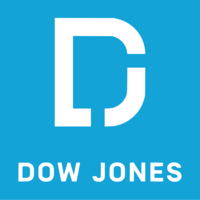Stock Market Set for Longest Losing Streak in Months

Stocks suffered their longest losing streak of the year, as geopolitical turmoil rattled Wall Street and investors slashed their bets on the Federal Reserve cutting interest rates any time soon.
The S&P 500 fell 0.9 percent on Friday, its sixth consecutive decline, marking its worst run since October 2022.
The slide dragged the S&P 500 down by just over 3 percent for the week, a third straight weekly decline. By that measure, it is the longest weekly losing streak for the index since September, when concerns over rising government debt and a potential government shutdown compounded worries about the effects of high interest rates.
Those fears dissipated toward the end of last year as inflation cooled and investors began to bet that the Fed would soon cut rates, prompting a ferocious stock rally in the first three months of 2024.
But this month, worries that stubborn inflation would lead the Fed to keep rates high have returned, compounded by the widening conflict in the Middle East, with Israel striking Iran early on Friday.
“It’s clearly bleak,” said Andrew Brenner, head of international fixed income at National Alliance Securities.
Investors have pulled roughly $21 billion out of funds that invest in U.S. stocks over the two weeks through Wednesday, according to data from EPFR Global, which tracks fund flows. That compares to an inflow of around $80 billion for the year through early April. And the unease is not just apparent in the stock market.
U.S. government bond yields, which underpin interest rates for a wide variety of loans, have been rising. The average rate on 30-year mortgages, the most popular home loan in the United States, rose above 7 percent on Thursday for the first time this year.
The dollar is also markedly higher, putting pressure on countries that import goods from the United States and issue dollar-denominated debt. And oil prices, stoked by geopolitical tensions, are up more than 13 percent since the start of the year.
“There is nothing that looks good right now,” Mr. Brenner said.
Recent reports showing hotter-than-expected inflation have altered investors’ forecasts for the Fed, which has kept its key rate near a two-decade high. “The recent data have clearly not given us greater confidence and instead indicate that it’s likely to take longer than expected to achieve that confidence,” Jerome H. Powell, the Fed chair, said at an event in Washington on Tuesday.
Economists at Société Générale no longer expect the Fed to cut rates this year. BNP Paribas and Wells Fargo economists have also dialed down their expectations for cuts.
Traders in futures markets, which allow investors to bet on where interest rates are headed, are wagering on one, and perhaps two, quarter-point cuts by the end of the year. At the start of the year, traders were expecting six cuts over that period.
At first, the shift appeared to be welcomed by stock investors. A strong economy, all else equal, is good for the stock market, and while some inflation data had started to buck the trend earlier this year it wasn’t enough to disrupt the broader cooling that took hold in 2023. But recent inflation reports have continued to disappointed investors and economists and become harder to ignore.
John Williams, the president of the New York Fed, said this week that it was possible that another increase, rather than a cut, to rates might be warranted if inflation remained sticky, even if that wasn’t what he considered the most likely scenario. Other officials have noted that the Fed may have to wait until much later this year, or even 2025, to begin easing rates.
So far, worries have yet to intensify to the point of threatening the strength of the U.S. economy. Although the S&P 500 has fallen 5.5 percent this month, it remains more than 4 percent higher for the year.
And a recent survey of fund managers around the world by Bank of America showed the most optimism since January 2022, with respondents expecting global growth to accelerate. The biggest risk, according to the respondents, is a rise in inflation that could keep interest rates elevated, squeezing growth abroad and at home.
Reflecting some of those worries, the Russell 2000 index that tracks smaller companies that tend to be more sensitive to the outlook for the domestic economy, has slumped to a loss of roughly 4 percent for the year.
“I think the recent selling pressure is just the beginning of a larger move,” said Peter Tchir, head of macro strategy at Academy Securities.





